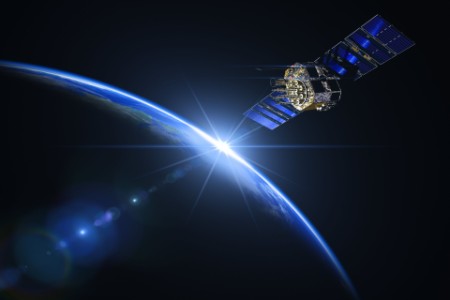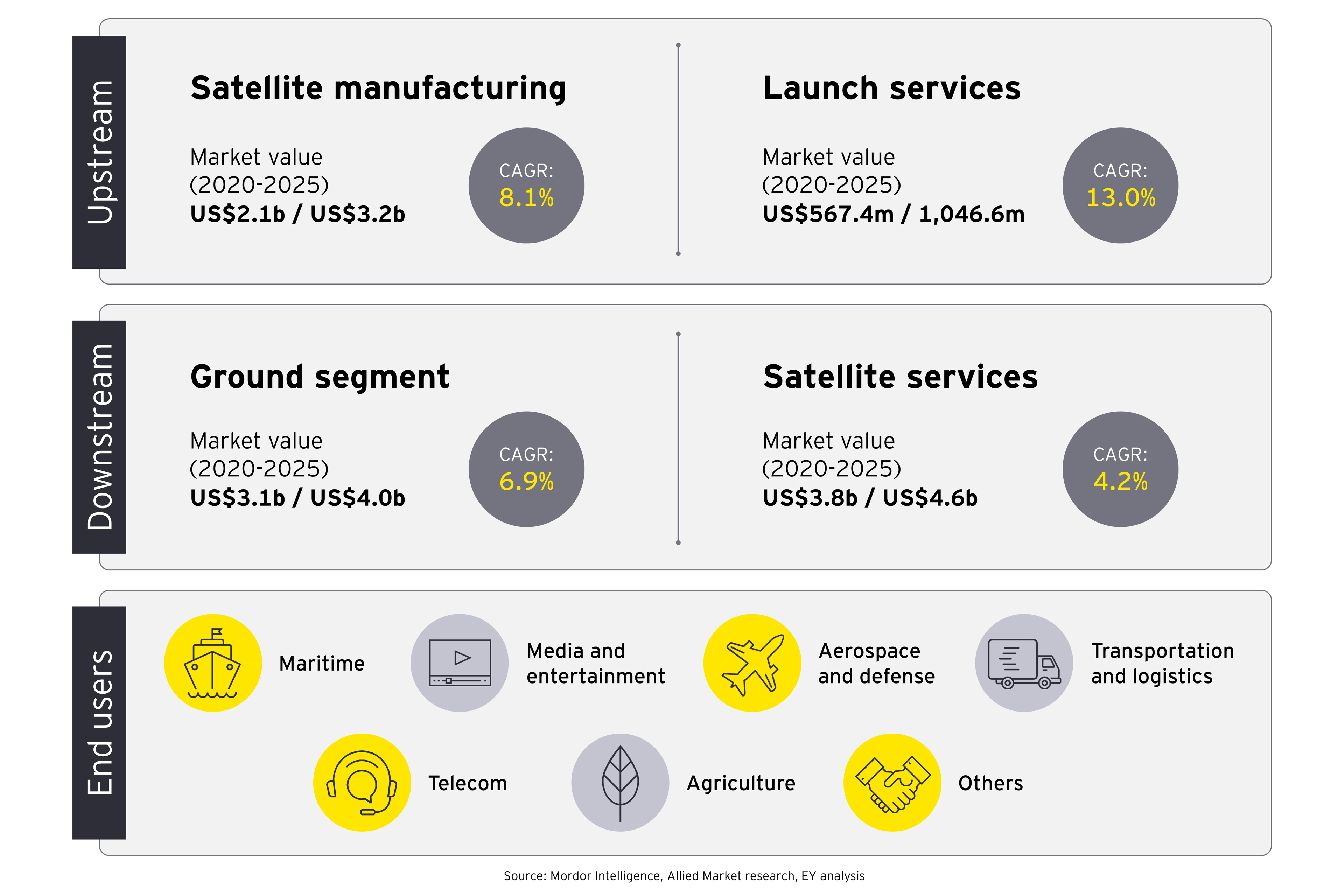Indian space economy — set for accelerated growth
The satellite services and application market in India will be driven by greater demand for high bandwidth and lower latency data requirements, connect the unconnected with voice and data communication services and increase in IoT and autonomous systems. In addition, an increase in demand for military and defense satellite communication solutions is likely to spur the market forward. From an end-user industry perspective, media and entertainment may account for 26% of the total services market by 2025, followed by retail and enterprise at 21% and defense at 20%. The remote sensing segment may register one of the highest CAGR through 2025, driven by an increase in resolution of commercially available imagery and adoption of new-age technologies.
For satellite manufacturing, “Make in India” initiative mayspur growth owing to increased demand for small satellites. By 2025, the satellite manufacturing segment will be the 2nd fastest growing in the Indian space economy. Setting-up space parks across the country is likely to give a fillip to companies operating across the space value chain, especially manufacturing. It will be key to attracting global startups working in the space sector and help to incubate spacetech companies in India.
Several companies are utilizing cutting-edge technologies to develop innovative launch solutions in India. They have built considerable expertise around the launch of Low Earth Orbit (LEO), Medium Earth Orbit (MEO) and Geosynchronous Equatorial Orbit (GEO) satellites and orbit management solutions. The launch segment is fast becoming a key focus area for startups and small and medium businesses (SMEs) in India to drive the innovation agenda and to make use of new revenue opportunities.



